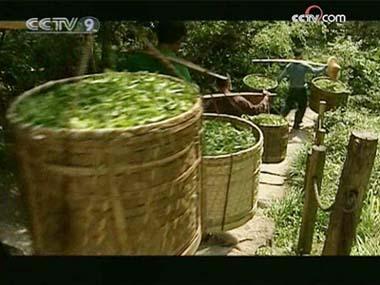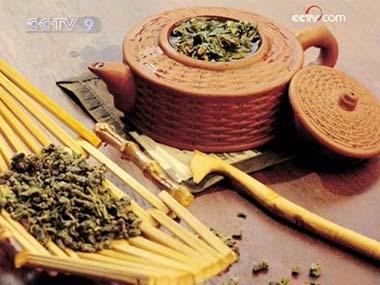Source: CCTV.com
02-25-2009 08:42
The National Intangible Cultural Heritage Technique Exhibition wrapped up at the Beijing Agricultural Exhibition Hall on Monday. Some one hundred age-old techniques were displayed during half a month, drawing 200-thousand visitors. Tea making and serving was one of the attractions.
 |
| Tea-making techniques are mainly passed on from master to apprentices. |
Visitors got to taste Oolong tea and learning the processing technique. The making of Oolong tea, a specialty of east China's Fujian's Wuyi Mountains. It made the first list of national intangible cultural heritages in 2006. The technique was first applied during Han dynasty, around two thousand years ago. The process has seven major steps, including shaking, roasting and baking.
The oolong tea maker Ye Qitong said, "Time is crucial to decide the aroma of the tea. Generally, we use eight to ten hours to bake the tea leaves, but the exact time is according to the experience of the workers. Accumulating experience is very important for the worker."
Click for more news in Culture Express>>
While the Wuyi Mountains produces the best oolong tea, Yunnan, in southwest China, is famous for producing Pu'er tea. Pu'er has been popular in recent years as a digestive and dieting aid. Making of Pu'er tea involves four major procedures-- worshiping the god, picking good leaves, roasting and baking, and steaming.
 |
| Tea making and serving was one of the attractions. |
Pressing tea into bricks is the last procedure. Spectators were invited to try.
The pu’er tea maker Li Xingchang said, "For this procedure, you have to make the brim bearing equal thickness."
Tea-making techniques are mainly passed on from master to apprentices. Training classes have been booming at major production areas, popularizing the techniques and tea culture.
Editor:Zhao Yanchen
